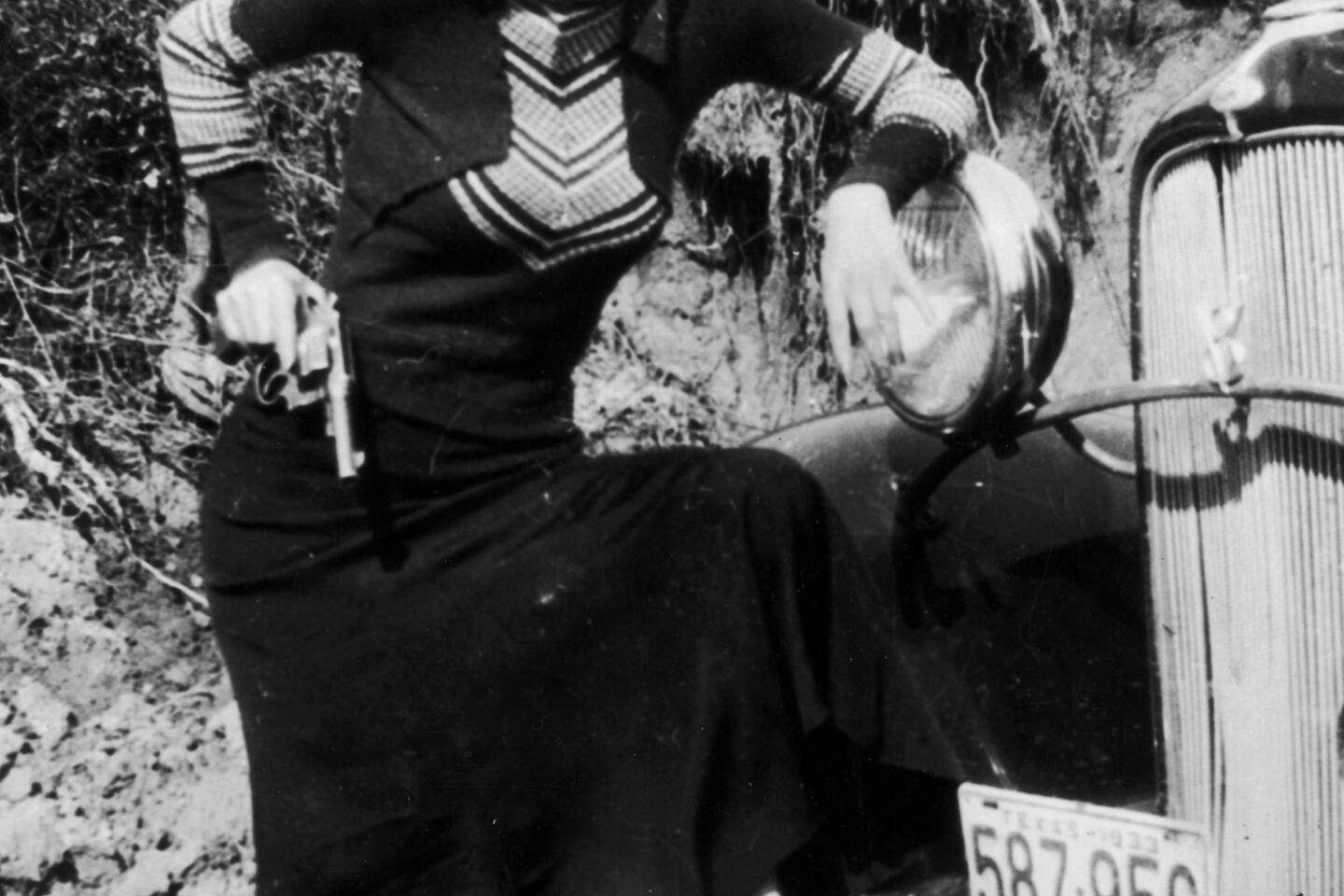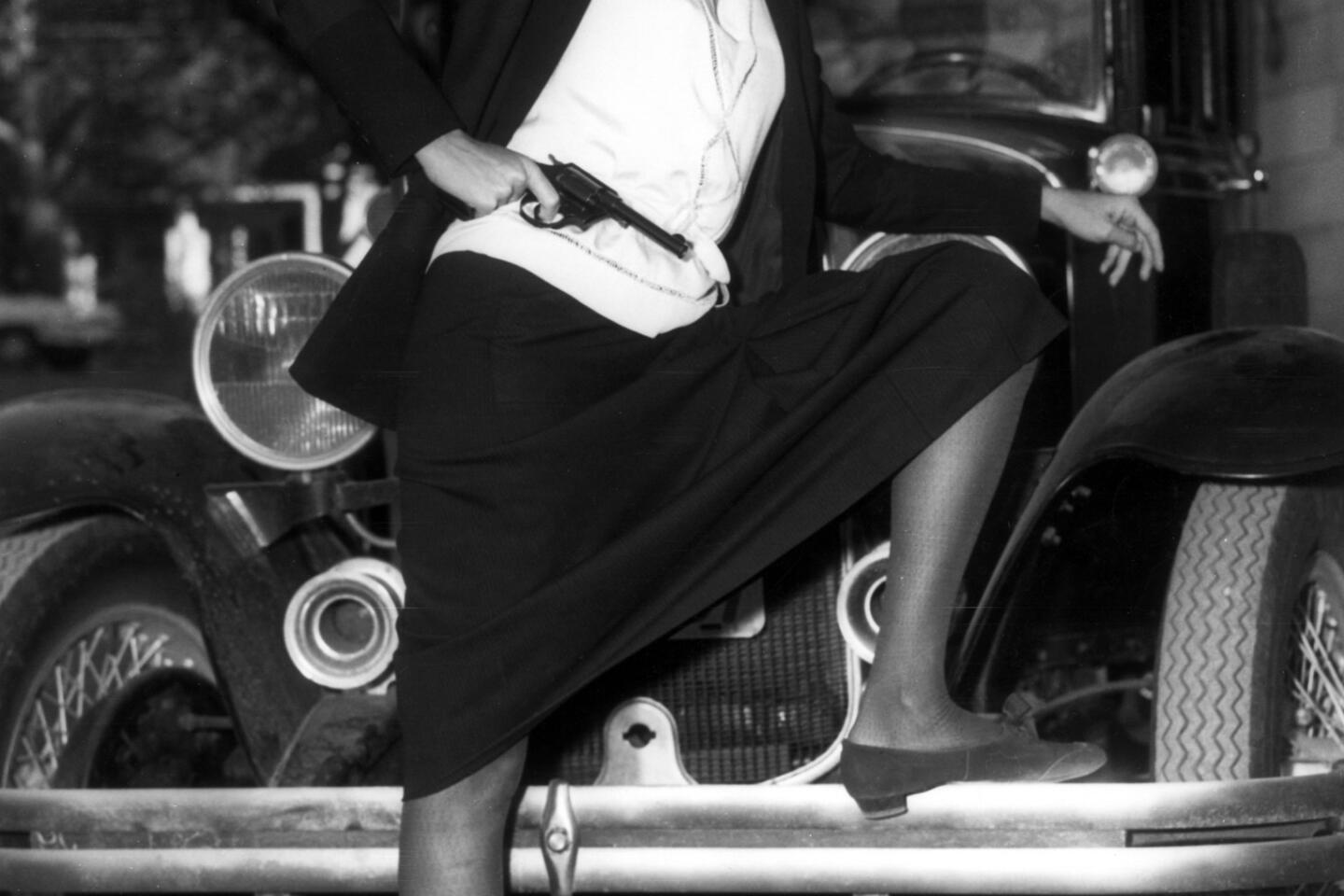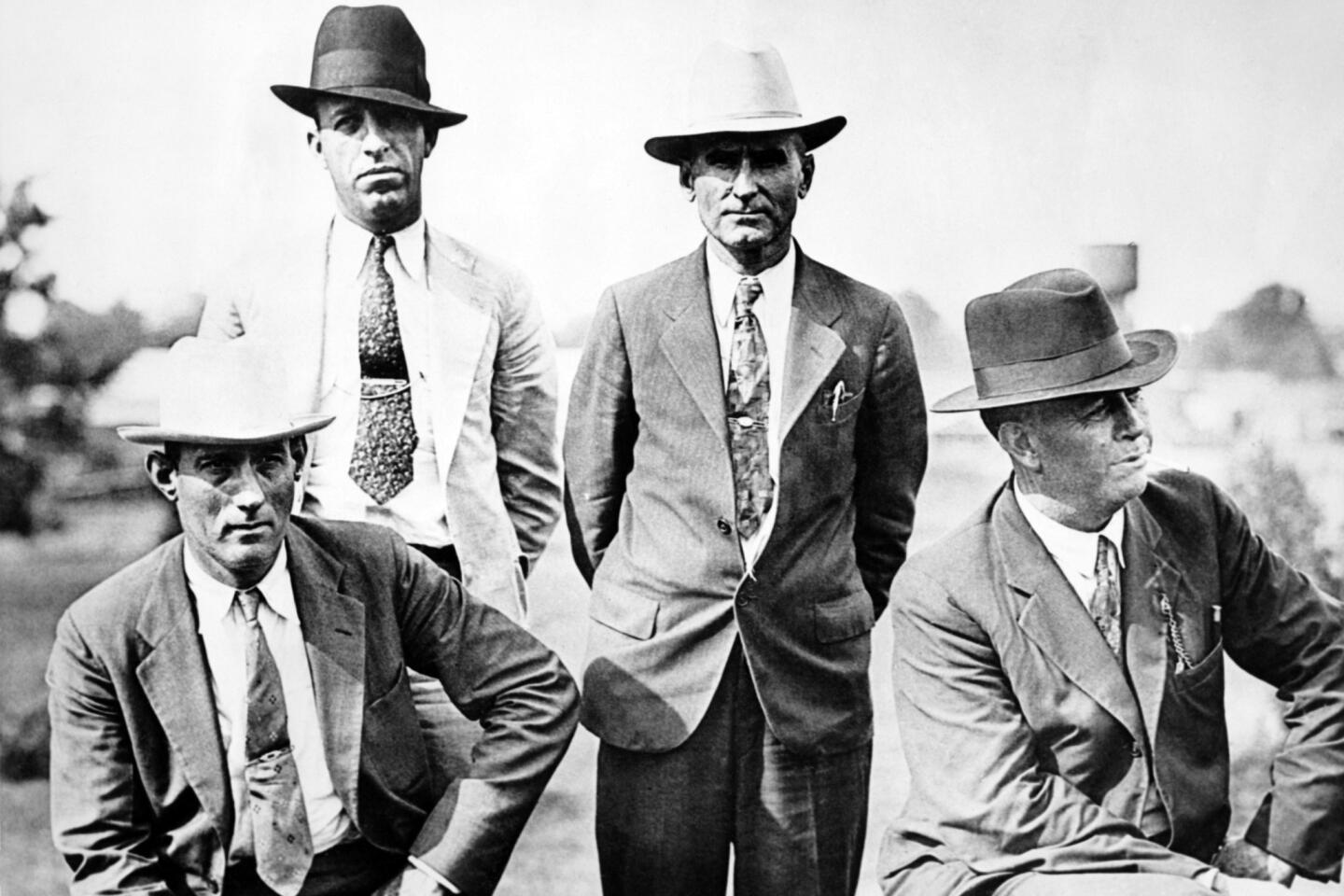Review: ‘Bonnie and Clyde’ looks great, but its history is way off
In terms of mythology, it was Bonnie Parker who turned a small band of murderous thugs led by Clyde Barrow into the stuff of legend.
Even as the Depression-era gang went on its murderous two-year crime spree, the idea of a female outlaw titillated a nation already prone to romanticizing criminals amid a failing economic system. When she and her lover died in a hail of gunfire, and photos of her posing with firearms and a getaway car were discovered, Bonnie became the pin-up girl for the hyper-sexualized archetype of the gun moll.
So it makes a certain amount of sense that the two-part miniseries “Bonnie and Clyde,” which airs simultaneously Sunday and Monday on History, A&E and Lifetime, would frame Bonnie (Holliday Grainger) as a woman who, stymied by her lack of opportunities, sees small-time crook Clyde Barrow (Emile Hirsch) as a way to get out of her small-town life.
PHOTOS: ‘Bonnie & Clyde,’ real and onscreen
What doesn’t make sense is the creative decision to make her a thwarted actress who is not just muse and criminal mastermind but also the director of her own publicity campaign. But then a lot of what happens in “Bonnie and Clyde” doesn’t sense, at least not historically. Best to consider it a work of complete fiction and enjoy the performances, which are universally fine, and the smooth, wood-barrel-aged way it goes down.
The historic Bonnie Parker might not have ever shot a gun (accounts vary). This Bonnie, on the other hand, breaks Clyde out of jail, pushes him to take on bigger jobs and more firepower, mows coppers down with abandon and supplies a (completely fictitious) female journalist (played by Elizabeth Reaser) with the initial idea of Bonnie and Clyde. Complete with photos!
Hirsch’s Clyde, meanwhile, is an essentially sweet-natured fellow, easily led and completely smitten. In a voice-over caught between Southern Gothic and your seventh-grade history class, he informs us from the beginning that ever since he survived a “fever of mysterious origins,” he has been gifted with the Sight.
All that means is that from time to time the audience is treated to dreamy visions of the awful things to come. Which do not in any way serve as a spoiler alert; they’re just there to up the artsiness factor.
To show the young folk just where this tale is going, “Bonnie and Clyde” opens with a preface to the famous ambush, which left the two so pocked with bullet wounds it was said that the undertaker had a difficult time embalming them. This is not, by the way, in the movie. Instead, there is a disturbing but quite powerful image of the car with their bodies being towed and having to stop when the truck overheats. The minute it is glimpsed, people begin running over to it, to look and touch the horror within.
Directed by Bruce Beresford with cinematography by Francis Kenny and studded with stars like William Hurt as Texas Ranger Frank Hamer and Holly Hunter as Mrs. Parker, “Bonnie and Clyde” moves with tommy gun energy through a landscape of picaresque poverty. The cars are lovely, as are the clothes, and it is tantalizing to consider a manhunt lacking in even the basic technology.
Hirsch and Granger are lovely too, although Granger’s accent is distractingly out of control. But neither of them offer any insight into what drove the couple, what they actually hoped to achieve, and what kept them going when it became clear that things were not going to end well.
And History might have a little soul-searching to do; dramatic license should not mean Make a Huge Number of Important Plot Points Up. That “Smash’s” Neil Meron and Craig Zadan serve as producers is not surprising — the message of the film is that Bonnie Parker wanted to be famous even if it killed her.
Which it did.
--------------------------------
‘Bonnie & Clyde’
Where: A&E, History, Lifetime
When: 9 p.m. Sunday and Monday
Rating: TV-14-LSV (may be unsuitable for children under the age of 14 with advisories for coarse language, sex and violence)
More to Read
The complete guide to home viewing
Get Screen Gab for everything about the TV shows and streaming movies everyone’s talking about.
You may occasionally receive promotional content from the Los Angeles Times.















